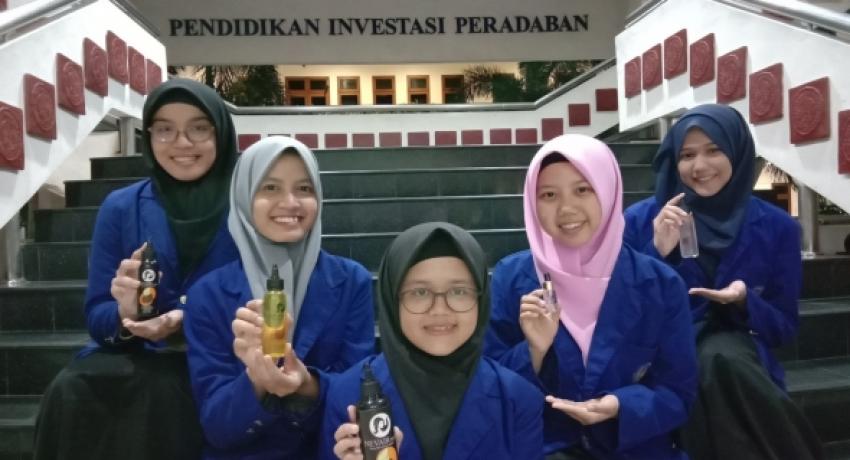Banana trees are very familiar with the lives of Indonesian people. Almost all parts of this tree can be used, ranging from fruit, leaves to stems. On the other hand, banana trees can only bear fruit once so the banana trees that have been fruiting are then cut down or left to die on their own. In fact, banana humps contain anthraquinone which can be used as a substitute for Minoxidil in synthetic hair tonics. The availability of abundant and unused raw materials inspires UNY students to make hair tonic from banana hump waste as a powerful natural hair care solution.
Students team up for the hair tonic research were consist of Fahayu Priristia from accounting education study program; An Nisa Nur Halimah from marketing management study program; Shilvi Woro Satiti and Annisa Fitria from chemistry study program; and Larasati Nindya Ismana from biology education study program.
“Dandruf and hair loss is a big problem for everyone,” Fahayu said.
The thing is current hair tonic available on the market contained minoxidil and finasterid. Both substance unfortunately may cause pain, myopathy and premature ejaculation on long term use. Therefore the team interested to create hair tonic from natural ingredients for safer use.
Shilvi Woro Satiti explained how to make this tonic hair called Nevair Tonic (Banana Weevil Hair Tonic). The ingredients needed are banana humps, alcohol, sodium metabisulfite, propylene glycone, propyl paraben, aquades, labels, fragrances, and menthol. “There are two stages for the hair tonic production namely making banana weevil water extract and making the hair tonic,” Shilvi said.
An Nisa Nur Halimah said that Nevair Tonic are safe for the scalp. Nevair Tonic has passed various tests as part of Total Quality Management. This work succeeded in gaining Dikti funding in the Student Creativity Program in the field of entrepreneurship in 2019. (Dedy)





